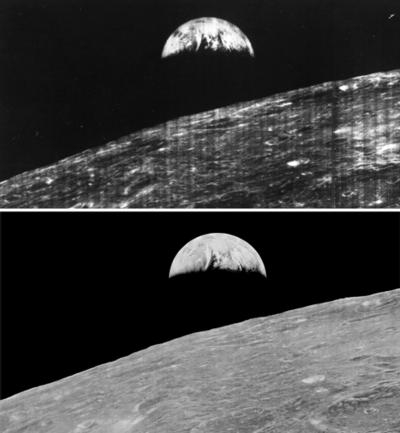Mon, Mar 18, 2013
NASA Funding Depleted, Private Donations Sought
An effort to restore and enhance analog images taken during unmanned Lunar Orbiter missions in the 1960s is seeking donations from the public to continue its work.

The LOIRP was started with funding by several volunteers in 2008. The original volunteer effort was followed by financial support from NASA which has now been exhausted. The project continues with private support. While the LOIRP more than met the requirements of initial funding, the LOIRP has not been able to retrieve all of the images - yet. This is where the public's help is needed.
Five Lunar Orbiter missions were sent to the Moon between 1966-67 to map the lunar surface to help select landing sites for Apollo human missions. The LOIRP managed to obtain original tape drives from the 1960s (covered in dust in a farmer's barn) and a full set of original Lunar Orbiter analog data tapes (threatened with erasure) containing all images sent back to Earth by the five spacecraft. None of this had been functional or usable since the late 1960s.
From its beginning, the LOIRP has run on a shoestring budget. Housed in an abandoned McDonalds restaurant at Moffett Field, California, the LOIRP team used spare parts bought on eBay, developed new hardware reverse-engineered from math equations in original documentation, modern laptops, the expertise of retired engineers and scientists, and the dedication of young students.
Over the years, the LOIRP has been able to retrieve Lunar Orbiter images with far more resolution and dynamic range than was possible in the 1960s. Indeed, many of the images exceed what the Lunar Reconnaissance Orbiter (LRO) is sending back from the Moon today. Among the images that have been given new life are the iconic "Earth rise" (pictured) image and the so-called "picture of the century", an oblique view inside crater Copernicus.
The LOIRP has been honored in the Congressional Record and has been featured on the editorial page of the New York Times, the front page of the Los Angeles Times, and in Science Magazine. During the official 40th anniversary celebration of the Apollo 11 landing at the National Air & Space Museum, the LOIRP "before" image of the Apollo 11 landing site was featured along side LRO's "after" image.
After five years the LOIRP has optimized its hardware, software, and procedures so as to achieve an efficiency far greater than it initially possessed. More images still need to be retrieved and enhanced. In addition, the LOIRP needs to generate a formal submission of all images to the Planetary Data Archive. The public can help the LOIRP build upon a proven record of accomplishment and complete its task by donating to this program at RocketHub.
More News
Youth Explore With Hands-On Builds, RC Airplanes, Flight Sims, Much More KidVenture is located just north of the EAA Aviation Museum, at Pioneer Airport, and has arranged a myriad >[...]
“About nine decades ago, Amelia Earhart was recruited to Purdue, and the university president later worked with her to prepare an aircraft for her historic flight around the >[...]
Also: New Amelia Search, B737 Flap Falls Off, SUN ‘n FUN Unveiling, F-16 Record Captain Sully Sullenberger, the pilot who saved 155 people by safely landing an A320 in the Hu>[...]
"It is critically important for North American flight safety that Temporary Flight Restriction (TFR) violations are avoided. All pilots must familiarize themselves with updates to >[...]
Also: Hackers v Aviation, Discovery Moving?, Gogo Galileo HDX, EVE to Costa Rica Joby Aviation announced its electric air taxi successfully completed a series of VTOL wingborne tri>[...]
 KidVenture Educational Activities Lineup At EAA AirVenture 2025
KidVenture Educational Activities Lineup At EAA AirVenture 2025 Aero-News: Quote of the Day (07.07.25)
Aero-News: Quote of the Day (07.07.25) Airborne 07.07.25: Sully v Bedford, RAF Vandalism, Discovery Moving?
Airborne 07.07.25: Sully v Bedford, RAF Vandalism, Discovery Moving? Aero-News: Quote of the Day (07.08.25)
Aero-News: Quote of the Day (07.08.25) Airborne-NextGen 07.08.25: Joby in Dubai, Army Electra, Archer iin Abu Dhabi
Airborne-NextGen 07.08.25: Joby in Dubai, Army Electra, Archer iin Abu Dhabi



